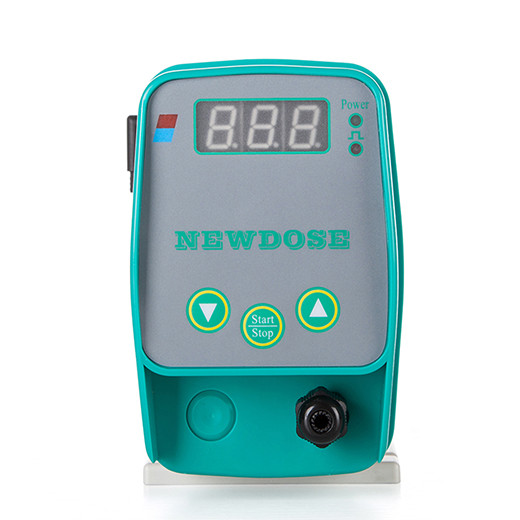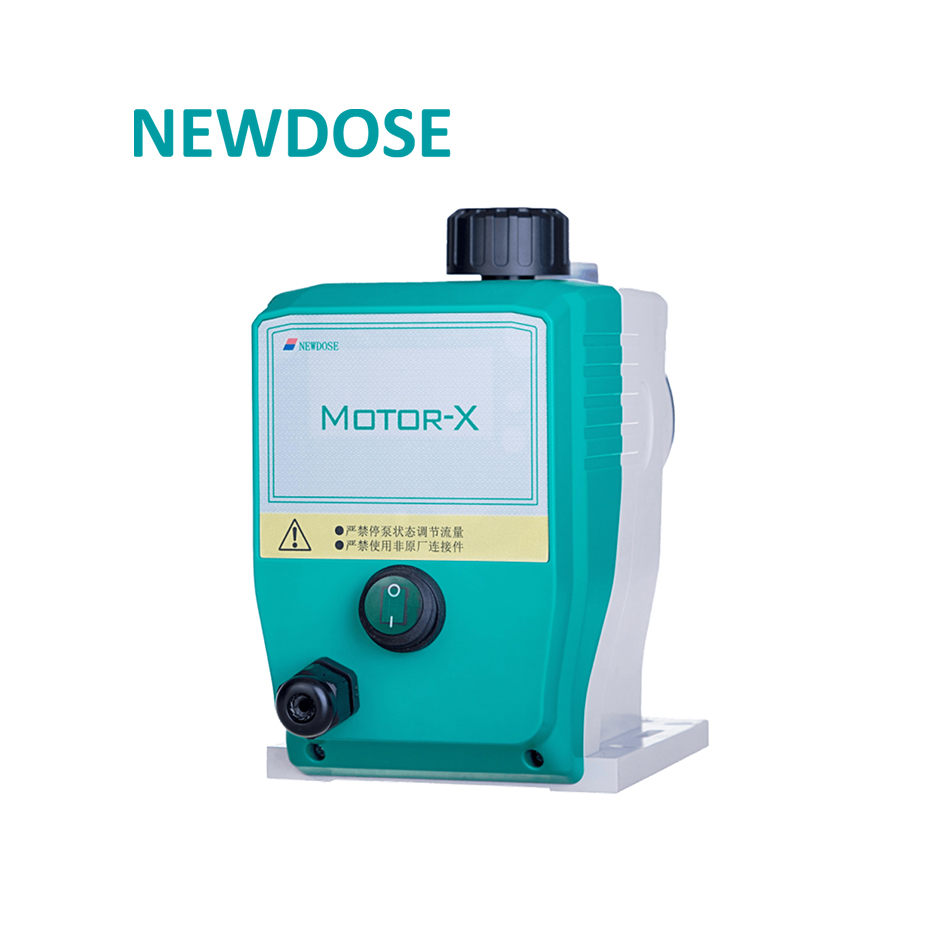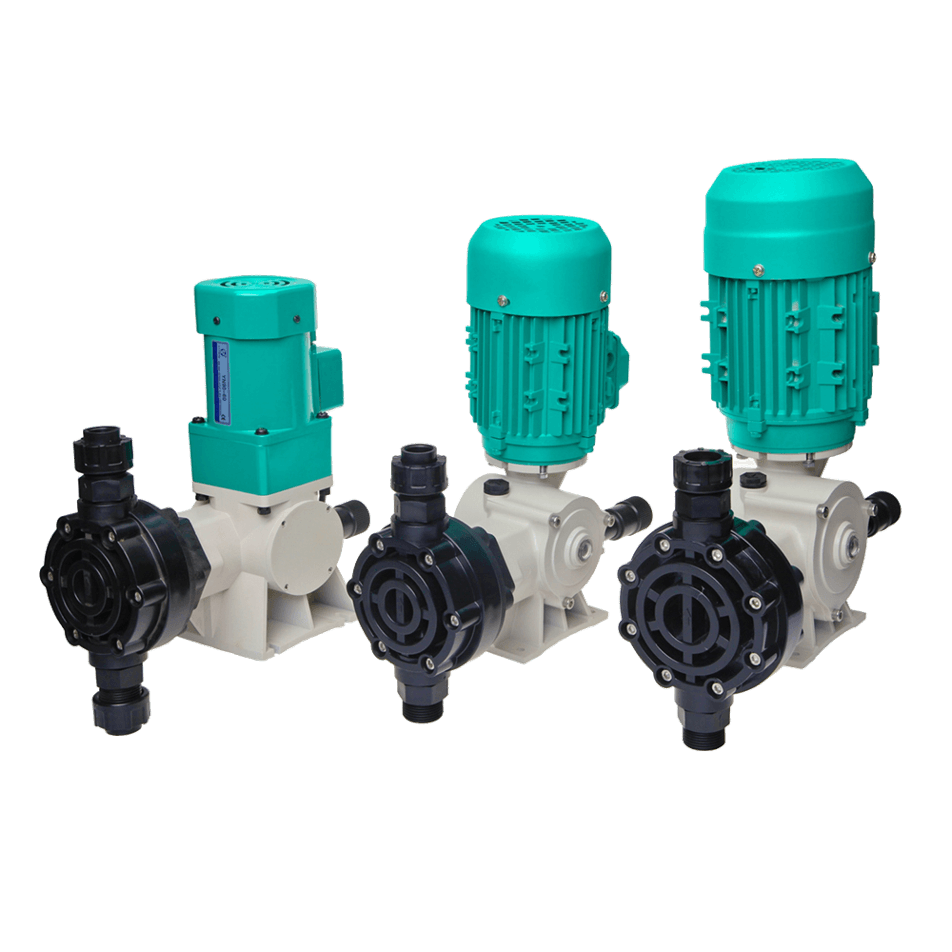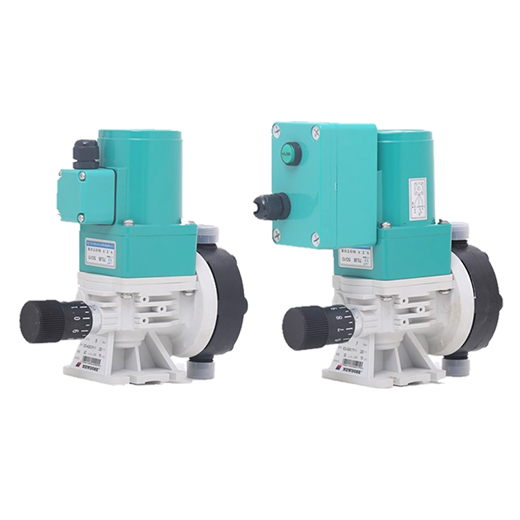Metering pumps are used more and more in the current pump market, among which diaphragm dosing pumps are used more in special environments. However, in the process of use, the diaphragm will be damaged due to some inappropriate operation or other reasons. Once the diaphragm of electrical metering pump is found damaged and not replaced in time, it will lead to unsatisfactory results. So, how to replace the damaged diaphragm of metering pump and how to deal with the abnormal suction of metering pump?
Ⅰ. How to replace the damaged diaphragm of metering pump?
1. Remove the 4 screws fixing the metering pump head at the pump head position.
2. After the metering pump head is loose, remove the metering pump head before adjusting the stroke length to 0% position. It can ensure that the electromagnetic shaft has enough pressure to keep its connection stable, so that the diaphragm can be unscrewed.
3. Pull the hydraulic end outward to separate the screw from the socket. Grasp the liquid end and rotate counterclockwise. With a little resistance, you can unscrew the diaphragm.
4. Once the diaphragm is removed, check the safety diaphragm of the metering pump to ensure that it is intact and free from any damage. Install a new diaphragm and rotate the back plate and diaphragm clockwise until they are close. Adjust the back plate so that the leakage discharge hole is located at the bottom of the pump.
5. After the diaphragm is installed and the leakage discharge hole of the back plate is placed in a vertical position, install the pump head of the metering pump. Ensure that the suction valve is aligned with the leakage discharge hole, and the screws at the hydraulic end are aligned with the corresponding 4 holes.
6. Rotate to 100% of stroke length. In this way, the whole set of components can be rotated to align the leakage discharge hole of the back plate with the lowest end of the pump. Adjust the hydraulic end and diaphragm to the right position during the operation of the pump.
7. After the position of the hydraulic end and the back plate is adjusted, tighten the four bolts diagonally until they are suitable. The work should be done with even force.
Ⅱ. How to deal with abnormal suction of metering pump?
Removing and replacing the diaphragm of metering pump: when removing the old diaphragm, we often encounter trouble. Some additional advice on how to remove the old diaphragm will be provided here.
1. After loosening the pump head, adjust the stroke length to 10% position before taking off the pump head. It can ensure that the electromagnetic shaft has enough pressure to keep its connection stable, so that the diaphragm can be unscrewed.
2. Pull the hydraulic end outward to separate the screw from the socket. Grasp the liquid end and rotate counterclockwise. With a little resistance, you can unscrew the diaphragm.
3. The metered chemicals may crystallize at the hydraulic end, causing the ball and seat of the check valve to fail to work normally.
4. There may be gas leakage at the suction end of the metering pump. The connector on the suction side of the hydraulic end may lack O-ring or the connection of the suction valve may be loose.
5. A high viscosity medium is measured by flow monitoring, and a flow fault indication signal is received in the process of liquid introduction. How to solve this problem:
By loosening the four pump head screws, move the hydraulic end, rotate the stroke length to 10%, and grasp the hydraulic end. Then slide out of the screw hole, so that the screws do not contact them, but still hold the back plate and diaphragm. Then rotate the component counterclockwise. With a little resistance, the diaphragm will loosen from the electromagnetic shaft. If the diaphragm is not loose, use some lubricating oil on the contact surface between the diaphragm and the electromagnetic shaft. After placing for a few minutes, gently tap the diaphragm with a small plastic hammer, and then proceed again as described above.
 English
English  Español
Español  한국어
한국어  français
français  Deutsch
Deutsch  русский
русский  português
português  العربية
العربية  tiếng việt
tiếng việt  Türkçe
Türkçe  ไทย
ไทย 






